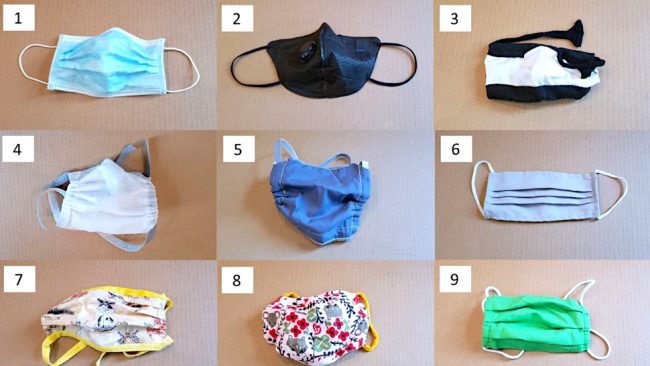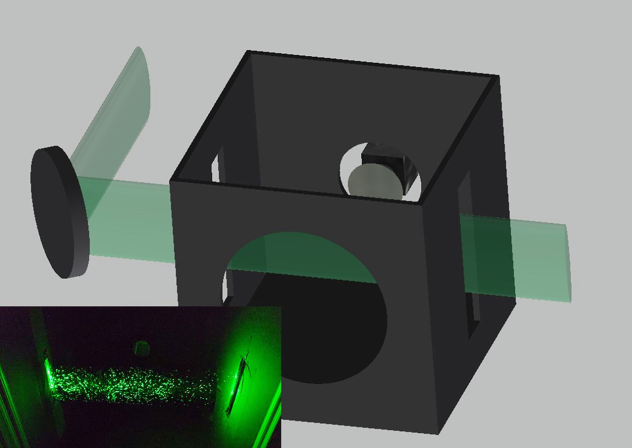Study shows best and worst face masks to guard against coronavirus
The message has been steady around the world, albeit for longer in some countries than others: Masks save lives. As the number of COVID-19 infections continues to soar, past 20 million worldwide as of Tuesday, more and more experts are encouraging not just the use of masks, but the use of the correct masks.
In a new study published by researchers from Duke University, scientists revealed their findings after testing the effectiveness of many different mask types to compare the protection offered against respiratory droplet transmission. As they found, some commonly used face coverings offer hardly any protection at all. Other popular mask alternatives might even be worse than not wearing a mask at all.
The study, led by Dr. Martin Fischer, a research professor in Duke's department of chemistry, compared the efficacy of 14 different mask types, ranging from the N95 mask to the bandana to the neck fleece, also known as a buff or gaiter.
 |
New York Yankees manager Aaron Boone wears a neck gaiter as a mask during a baseball summer training camp workout at Yankee Stadium, Wednesday, July 8, 2020, in New York. Duke University researchers concluded in a new study that a gaiter does more harm than good. (AP Photo/Kathy Willens) |
"We want to emphasize that we really encourage people to wear masks, but we want them to wear masks that actually work," Fischer told CNN.
To set up the experiment, Fischer and his team used a box, a laser, a lens, and a cell phone camera to track the number of droplets that spread during regular speech. According to Fischer, the laser formed a thin sheet of light between the slits in the box, and the camera was used to record the light that was scattered by the droplets.
Here are some of the study's results:
Unsurprisingly, the fitted N95, or the "3M 1860 Surgical Mask and Particulate Respirator," that has been used by healthcare professionals for years performed the most effectively at reducing transmission of droplets.
The disposable surgical mask also performed well, ranking as the second-best at reducing spread, ranging from zero to 0.1 in terms of particles spread.
After that, the three-layered mask made of synthnetic material polypropylene, laid in between two layers of cotton, and the two-layered mask of synthetic material ranked as the next two best.
According to the study, there are six different mask styles made from cotton material that all performed somewhat effectively, but their efficacy depends on certain variables.
Along with factors such as facial hair, the effectiveness of the homemade cotton masks "depends how loud you speak and how well it fits around your face," Fischer said.
Those masks include the cotton mask with ties, the two-layer cotton mask, the hand-sewn cotton mask (using the popular "Olson" pattern), the single-layer cotton mask, and the pleated two-layer cotton mask.
The valved N95 and the MAXIMA AT mask were also included in this category. In its COVID-19 guidelines, the Centers for Disease Control and Prevention (CDC) said that respirators with exhalation valves should not be used where a sterile field must be maintained "because the exhalation valve may allow unfiltered exhaled air to escape into the sterile field."
 |
A laser beam is expanded vertically by a cylindrical lens and shined through slits in the enclosure. The camera is located at the back of the box, a hole for the speaker in the front. The inset shows scattering for water particles from a spray bottle with the front of the box removed. (Martin Fischer, Duke University.) |
The CDC further advised, "If you only have a respirator with an exhalation valve available, cover the exhalation valve with a facemask (surgical or procedure mask) that does not interfere with the respirator fit."
Masks that may do more harm than good
At the very end of the spectrum, the researchers were shocked to find that not only were trendy face coverings such as bandanas and neck gaiters ineffective, but that they actually spread respiratory droplets more effectively than no mask at all. The reason for that, the study said, is because the thin material of the fleece splits the droplets into smaller particles, allowing them to spread more easily.
"We were extremely surprised to find that the number of particles measured with the fleece actually exceeded the number of particles measured without wearing any mask," Fischer told CNN.
Duke physician Eric Westman, another researcher involved in the study, said the findings about the less-effective masks are important because little information was available.
"They were no good," he said, according to DukeHealth.org. "The notion that ‘anything is better than nothing' didn't hold true."
Keep checking back on AccuWeather.com and stay tuned to the AccuWeather Network on DirecTV, Frontier and Verizon Fios.

 money
money 


